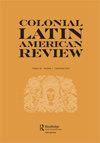从猎人到地狱猎犬:哥伦布的狗和早期西班牙加勒比地区人犬关系的转变
IF 0.4
2区 历史学
Q1 HISTORY
引用次数: 0
摘要
克里斯托弗·哥伦布在他的第二次航行中首次在新世界将狗用于军事目的,这项战争技术在一个多世纪以来一直被征服者使用。《征服之犬》(Dogs of the Conquest)一书的作者约翰和珍妮特·瓦尔纳(John and Jeannette Varner,意识到要获得土著人民的合作,就需要一定程度的胁迫。他们支持这一假设,将第二次航行的狗描述为獒犬和灰狗,并将哥伦布在1495年3月的维加皇家战役中使用的狗描述成獒犬(Varner和Varner 1983,xiv,4,8)。如果他们对相关品种的描述是正确的,可能很难质疑他们关于丰塞卡动机的逻辑,但Vega Real的狗被描述为lebreles、灰狗或导盲犬,而不是獒、獒、,没有什么理由认为,当哥伦布的第二支舰队被配备时,大量的獒会被认为是伊斯帕尼奥拉岛的必需品。这些船运载牲畜,但在收割之前,大多数牲畜都会被保存下来,以建立自我维持的畜群来养活人类(Las Casas 1875–1876,2:2,3)。多才多艺的猎犬可以帮助供应肉类。本文章由计算机程序翻译,如有差异,请以英文原文为准。
From hunters to hell hounds: the dogs of Columbus and transformations of the human-canine relationship in the early Spanish Caribbean
Christopher Columbus first used dogs for military purposes in the NewWorld during his second voyage, a war technology that continued to be employed by the conquistadors for more than a century. John and Jeannette Varner, authors of the comprehensive history Dogs of the Conquest, which surveys the military and administrative use of war dogs in the New World, argued that the dogs were brought on the second voyage because the cleric in charge of provisioning the seventeen ships, Juan Rodríguez de Fonseca (‘Fonseca,’ 1451–1524), realized that to obtain the cooperation of Indigenous people, a level of coercion would be necessary. They support this supposition by describing the dogs of the second voyage as mastiffs and greyhounds, and the dogs that Columbus used at the Battle of Vega Real in March 1495 as mastiffs (Varner and Varner 1983, xiv, 4, 8). Were they correct in this description of the breeds involved, it might be difficult to dispute their logic concerning Fonseca’s motive, but the dogs at Vega Real were described as lebreles, greyhounds or sighthounds, not mastines, mastiffs, and there is little reason to think that a large number of mastiffs would have been considered essential in Hispaniola when Columbus’s second fleet was provisioned. The ships carried livestock but most of these would have been preserved to establish self-sustaining herds before harvesting to feed the human population (Las Casas 1875–1876, 2:2, 3). Versatile hunting dogs could help supply meat.
求助全文
通过发布文献求助,成功后即可免费获取论文全文。
去求助
来源期刊

Colonial Latin American Review
HISTORY-
CiteScore
0.60
自引率
25.00%
发文量
25
期刊介绍:
Colonial Latin American Review (CLAR) is a unique interdisciplinary journal devoted to the study of the colonial period in Latin America. The journal was created in 1992, in response to the growing scholarly interest in colonial themes related to the Quincentenary. CLAR offers a critical forum where scholars can exchange ideas, revise traditional areas of inquiry and chart new directions of research. With the conviction that this dialogue will enrich the emerging field of Latin American colonial studies, CLAR offers a variety of scholarly approaches and formats, including articles, debates, review-essays and book reviews.
 求助内容:
求助内容: 应助结果提醒方式:
应助结果提醒方式:


